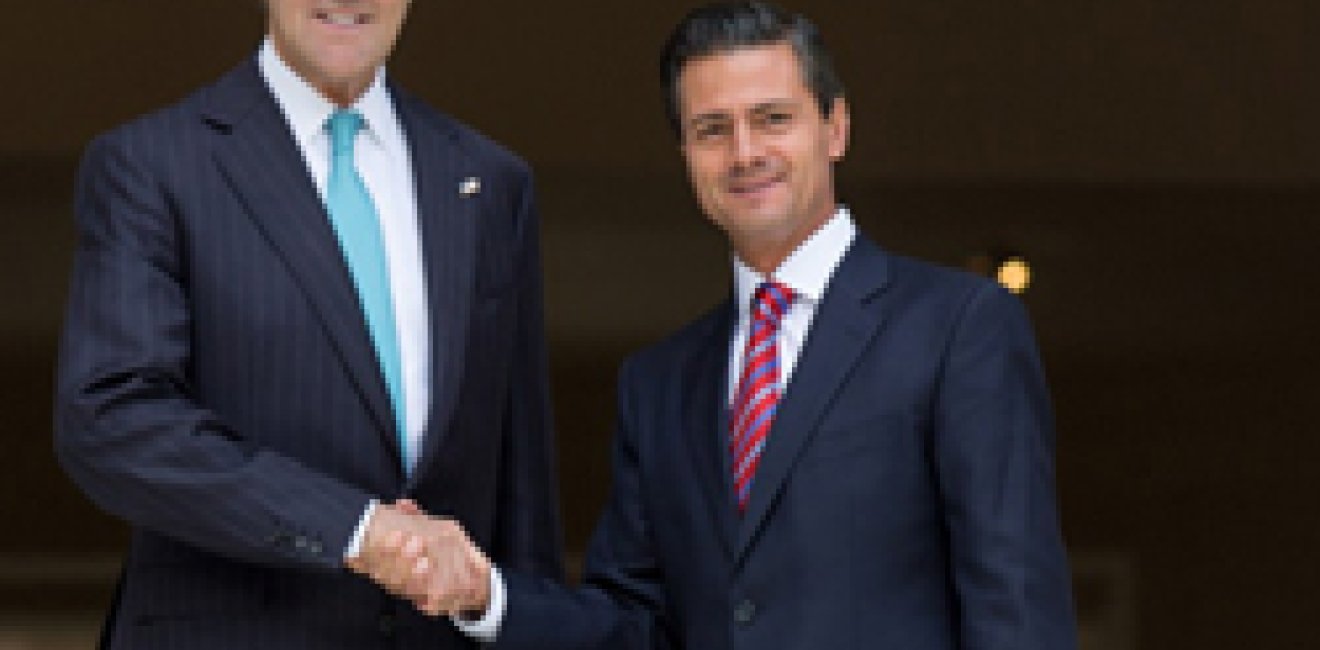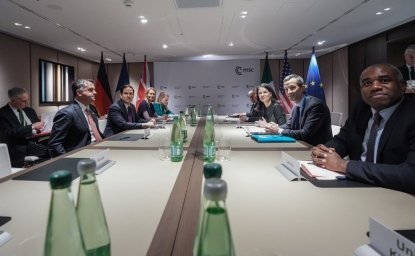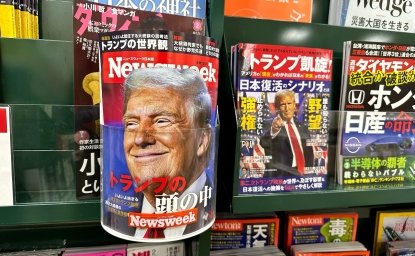What Does Kerry Need From His First Mexico Trip? Momentum
Despite so many domestic politics mixed into this meeting, international relationship is key, write Christopher Wilson and Duncan Wood on Kerry's first trip to Mexico.
Despite so many domestic politics mixed into this meeting, international relationship is key, write Christopher Wilson and Duncan Wood on Kerry's first trip to Mexico.

The first thing John Kerry did upon taking office as secretary of state was to speak to a group of students at the University of Virginia. He told them that strong U.S. leadership abroad depends on having a strong country and a strong economy at home, saying, “I came here purposefully to underscore that in today’s global world, there is no longer anything foreign about foreign policy.”
Then, as foreign ministers do, he set out a grueling schedule to meet and work with his counterparts across the globe. Kerry has visited 48 countries and traveled almost 500,000 miles, but oddly enough, until he arrived in Mexico Wednesday, he had not visited the United States’ closest neighbors, Mexico and Canada.
None of this means the United States has been ignoring Mexico, but it does tell us something about the evolution of the relationship. Whereas the previous holder of his job faced a Mexico defined by the fight against organized crime, Kerry has encountered a Mexico that, even as it continues to face that challenge, is seen as a country in motion, a land of major economic reforms, and an emerging power at the global level. In short, Mexico is less of a problem and more of an opportunity. This helps explain why Kerry, with his attention pulled from one global crisis to the next, is only now visiting Mexico.
In keeping with his first speech in Virginia, this trip to Mexico is as much about strengthening the domestic bases of U.S. foreign policy — the economic competitiveness of our region and the security of our neighborhood and borders — as it is an exercise in traditional diplomacy. While Kerry has been in Israel 11 times since becoming secretary, other members of the Cabinet, including the secretaries of transportation, treasury, homeland security, commerce and agriculture, and indeed President Barack Obama, have all visited Mexico.
While in Mexico, Kerry will focus on the economy, education and security. Recognizing the many deep ties between the United States and Mexico, he will work with Mexico to jointly strengthen the entire region.
On the economic front in particular, the two countries are deeply intertwined. Bilateral trade totals over a half-trillion dollars annually, and regional manufacturers have created an integrated continental production platform with cross-border supply chains. In recognition of this, in 2013 the presidents of the U.S. and Mexico agreed to create a high-level economic dialogue to boost cooperation in areas such as trade facilitation, entrepreneurship and advanced manufacturing.
For its security, the United States has long depended on having Pacific neighbors and two oceans separating it from major rivals, but in an era characterized by transnational and non-state threats, including terrorism and organized crime, as well as new challenges related to protecting energy infrastructure and information systems, the nation depends more than ever on active partnerships with its neighbors. There was a hiccup in the security partnership during the first several months of the new Mexican administration in 2013, but both intelligence sharing and U.S. assistance through the Merida Initiative appear largely back on track.
Educational and research partnerships are in many ways an extension of the economic agenda, especially as the availability of educated and talented workers overtakes the costs of labor as the primary driver of companies’ decisions about where to locate investments. Unfortunately, educational collaboration is among the weakest areas in U.S.-Mexico relations. Despite the fact that the United States and Mexico are neighbors with a huge commercial relationship and deep social ties, there is very little educational exchange. An initiative to boost these numbers enjoys great support from both governments, but questions about how to advertise and fund the programs remain.
The relationship the United States has with Mexico probably involves more domestic policy than relations with any other country. Of course, the downside of having so many domestic issues mixed into an international relationship is that progress gets bogged down in domestic politics. For the sake of the United States and Mexico, let us hope Kerry’s visit helps build momentum to overcome these challenges.



The Mexico Institute seeks to improve understanding, communication, and cooperation between Mexico and the United States by promoting original research, encouraging public discussion, and proposing policy options for enhancing the bilateral relationship. A binational Advisory Board, chaired by Luis Téllez and Earl Anthony Wayne, oversees the work of the Mexico Institute. Read more


The Wilson Center’s prestigious Latin America Program provides non-partisan expertise to a broad community of decision makers in the United States and Latin America on critical policy issues facing the Hemisphere. The Program provides insightful and actionable research for policymakers, private sector leaders, journalists, and public intellectuals in the United States and Latin America. To bridge the gap between scholarship and policy action, it fosters new inquiry, sponsors high-level public and private meetings among multiple stakeholders, and explores policy options to improve outcomes for citizens throughout the Americas. Drawing on the Wilson Center’s strength as the nation’s key non-partisan policy forum, the Program serves as a trusted source of analysis and a vital point of contact between the worlds of scholarship and action. Read more


